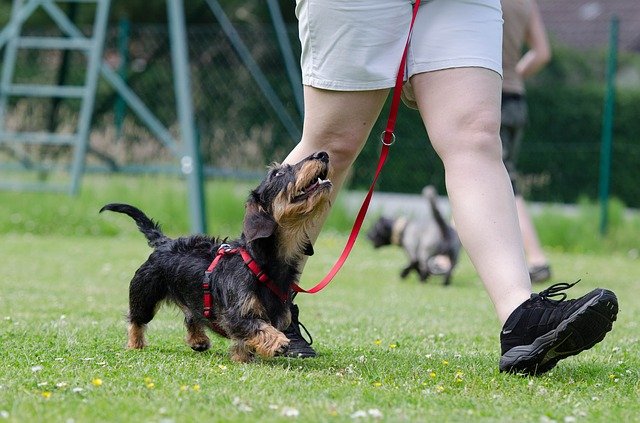9 Tips for Training Your Dog More Effectively
Image by Katrin B. from Pixabay
One of the most important and most rewarding aspects of owning a dog is training it to behave well – and possibly master some interesting tricks. Thorough training will make your dog more obedient, calmer, and capable of more, and on top of that, the training experience is an excellent opportunity to bond.
That said, dog training isn’t all fun and games. It can be challenging and strenuous – not to mention frustrating if you struggle to make progress.
Still, with the right strategies and the right equipment, you and your dog can have a much better experience together (and see better results faster).
How to Train Your Dog More Effectively
These tips can help you train your dog faster and more efficiently, while having more fun in the process:
1. Invest in training mats. First, invest in dog training flooring. These mats are specifically engineered to make training more comfortable for both you and your dog, especially on otherwise hard surfaces. They’re relatively inexpensive and easy to install, so there’s no reason not to give them a try.
2. Start with the basics. Don’t be too ambitious to start. While you might be working toward the goal of entering competitions or starting a stage performance, every dog needs to start with the same basic commands. It’s not hard to teach a dog how to “sit” and “lay down,” and once you’ve mastered those fundamentals, the rest of your training is going to be easier.
3. Choose the right rewards. Most dogs are easier to train when you have an effective reward system in place; when the dog does what you want it to do, you can reward it with a treat, a piece of food, verbal praise, and physical contact. Some dogs want a bit of each. Others respond to one specific reward better than the rest. Figure out the best rewards for your dog and don’t be afraid to mix things up on occasion.
4. Train in short intervals. You’ll see more progress and make your dog happier by training in short intervals. While some dogs may be able to tolerate hours-long sessions, it’s typically more fun and engaging to work just a few minutes at a time. You’re not going to see better results if you keep teaching your dog beyond its natural patience limits.
5. Do a little training each day. In line with this, it’s important to do a little bit of training each day. Rather than having an intense, once-a-week training session, you’ll keep the top of your lesson of mind and reinforce them on a regular basis. This will allow your dog to learn faster and more reliably – and it will make both of you enjoy the process more.
6. Work on your own patience. Most dogs will need at least four to five weeks to learn the fundamentals. They’ll need months, or even years, to learn more advanced commands. If your dog is older, if it’s a breed that’s less adept at learning, or if its past keeps it from trusting and learning easier, it’s going to be even more challenging. Because of this, you’ll need to be prepared for hiccups and plateaus – and work on your own patience. Remaining patient with your dog during the most difficult steps of the training process will lead to much greater trust and better results.
6. Understand your dog’s training style. Just as humans have different learning styles, dogs have different preferred training styles. Some respond well to constant positive reinforcement and support. Others prefer a stricter regimen. Some dogs work well with specific techniques and products; for example, the clicker-based training method has seen a rise in popularity in recent years.
7. Get help from the family. Training your dog will be much easier if you get help from your family (or the people who live with you). There’s only one caveat here; you’ll need to make sure everyone is training the dog in the same style. Any inconsistency in your approaches will confuse the dog and possibly lead to much worse results.
8. Enlist the help of a pro. If you’re struggling to see results or if you’ve simply stalled out, consider hiring a professional. Taking your dog to obedience classes or allowing them to work one-on-one with a professional trainer may be exactly what they need to make a breakthrough.
9. Keeping Things Fresh
Dog training shouldn’t be treated as a one-time ordeal. It’s an ongoing process if you want your dog to remain obedient and get more out of your relationship. Keep things fresh by teaching your dog new tricks on a regular basis and going over the fundamentals; if you do, both you and your dog will enjoy the rewards.
I’m a single mother of 2 living in Utah writing about startups, business, marketing, entrepreneurship, and health. I also write for Inc, Score, Manta, and Newsblaze

